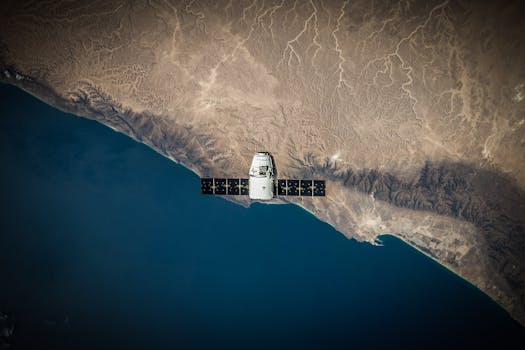
GEO Satellites: The Backbone of Global Communication
GEO satellites, or Geostationary Earth Orbit satellites, are a type of satellite that orbits the Earth at an altitude of approximately 36,000 kilometers. These satellites are stationed above the equator and remain fixed in relation to a specific point on the Earth’s surface, providing continuous coverage of a particular region. The focus keyword GEO satellites is essential in understanding the significance of these satellites in modern communication.
The use of GEO satellites has become increasingly prevalent in recent years, with applications ranging from telecommunications and navigation to weather forecasting and Earth observation. One of the primary advantages of GEO satellites is their ability to provide high-speed internet connectivity to remote and underserved areas, bridging the digital divide and facilitating global communication.
How GEO Satellites Work

GEO satellites operate by transmitting and receiving signals to and from Earth-based stations. These signals are then relayed to other satellites or ground stations, allowing for global communication and data transfer. The satellites are equipped with transponders, which are responsible for amplifying and re-transmitting the received signals. The signals are transmitted on a specific frequency band, such as C-band, Ku-band, or Ka-band, depending on the intended application.
The antennas used in GEO satellites are designed to provide high gain and directivity, allowing for efficient transmission and reception of signals. The satellites also employ advanced propulsion systems, such as ion engines, to maintain their position and altitude. The combination of these technologies enables GEO satellites to provide reliable and high-quality communication services.
Applications of GEO Satellites

GEO satellites have a wide range of applications, including telecommunications, navigation, weather forecasting, and Earth observation. In the field of telecommunications, GEO satellites are used to provide internet connectivity, voice communication, and data transfer services. They are also used for broadcasting television channels and providing mobile network services.
In the field of navigation, GEO satellites are used to provide location information and timing signals, which are essential for GPS (Global Positioning System) and other navigation systems. Weather forecasting is another critical application of GEO satellites, as they provide imagery and data on atmospheric conditions, ocean currents, and weather patterns.
Future of GEO Satellites

The future of GEO satellites is promising, with ongoing research and development focused on improving their capabilities and applications. The increasing demand for high-speed internet connectivity and global communication is driving the growth of the GEO satellite market. New technologies, such as satellite constellations and high-throughput satellites, are being developed to provide faster and more efficient communication services.
In conclusion, GEO satellites play a vital role in global communication, providing essential services such as internet connectivity, navigation, and weather forecasting. As technology continues to advance, we can expect to see even more innovative applications of GEO satellites, further bridging the digital divide and facilitating global communication.
See more:




